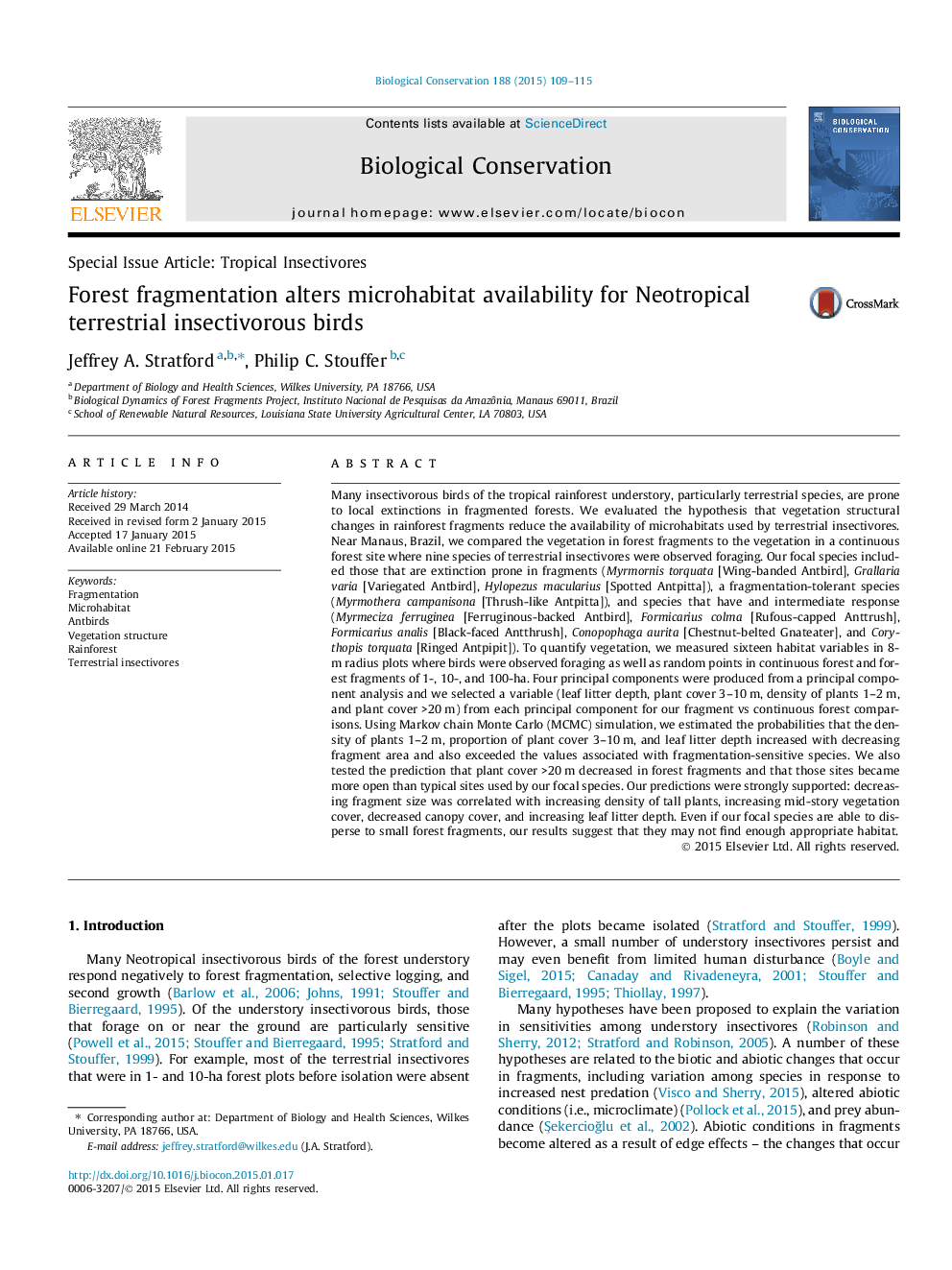| Article ID | Journal | Published Year | Pages | File Type |
|---|---|---|---|---|
| 4385046 | Biological Conservation | 2015 | 7 Pages |
•We quantified microhabitats of nine terrestrial insectivorous birds and forest fragments.•We directly estimated the probability of our predictions being correct.•Vegetation structure in fragments differed from a reference site.•Fragmentation-sensitive species used microhabitats that were not typical of forest fragments.•A fragmentation-tolerant species used microhabitats that were similar.
Many insectivorous birds of the tropical rainforest understory, particularly terrestrial species, are prone to local extinctions in fragmented forests. We evaluated the hypothesis that vegetation structural changes in rainforest fragments reduce the availability of microhabitats used by terrestrial insectivores. Near Manaus, Brazil, we compared the vegetation in forest fragments to the vegetation in a continuous forest site where nine species of terrestrial insectivores were observed foraging. Our focal species included those that are extinction prone in fragments (Myrmornis torquata [Wing-banded Antbird], Grallaria varia [Variegated Antbird], Hylopezus macularius [Spotted Antpitta]), a fragmentation-tolerant species (Myrmothera campanisona [Thrush-like Antpitta]), and species that have and intermediate response (Myrmeciza ferruginea [Ferruginous-backed Antbird], Formicarius colma [Rufous-capped Anttrush], Formicarius analis [Black-faced Antthrush], Conopophaga aurita [Chestnut-belted Gnateater], and Corythopis torquata [Ringed Antpipit]). To quantify vegetation, we measured sixteen habitat variables in 8-m radius plots where birds were observed foraging as well as random points in continuous forest and forest fragments of 1-, 10-, and 100-ha. Four principal components were produced from a principal component analysis and we selected a variable (leaf litter depth, plant cover 3–10 m, density of plants 1–2 m, and plant cover >20 m) from each principal component for our fragment vs continuous forest comparisons. Using Markov chain Monte Carlo (MCMC) simulation, we estimated the probabilities that the density of plants 1–2 m, proportion of plant cover 3–10 m, and leaf litter depth increased with decreasing fragment area and also exceeded the values associated with fragmentation-sensitive species. We also tested the prediction that plant cover >20 m decreased in forest fragments and that those sites became more open than typical sites used by our focal species. Our predictions were strongly supported: decreasing fragment size was correlated with increasing density of tall plants, increasing mid-story vegetation cover, decreased canopy cover, and increasing leaf litter depth. Even if our focal species are able to disperse to small forest fragments, our results suggest that they may not find enough appropriate habitat.
